Discover how an AI voice actor transforms text into speech. This guide covers how the technology works, its uses in video, and how to choose the right tools.
In This Article
Subscribe to our newsletter
Think of an AI voice actor as a digital performer, a piece of tech that transforms written words into incredibly realistic, human-like speech. It's a virtual actor that can read a script with the right emotion, tone, and style, making it a game-changer for video narration, character voices, and pretty much any kind of audio content. For creators looking for high-quality voiceovers without the usual hassle and cost, this technology is becoming an essential part of the toolkit.
What Exactly Is an AI Voice Actor?
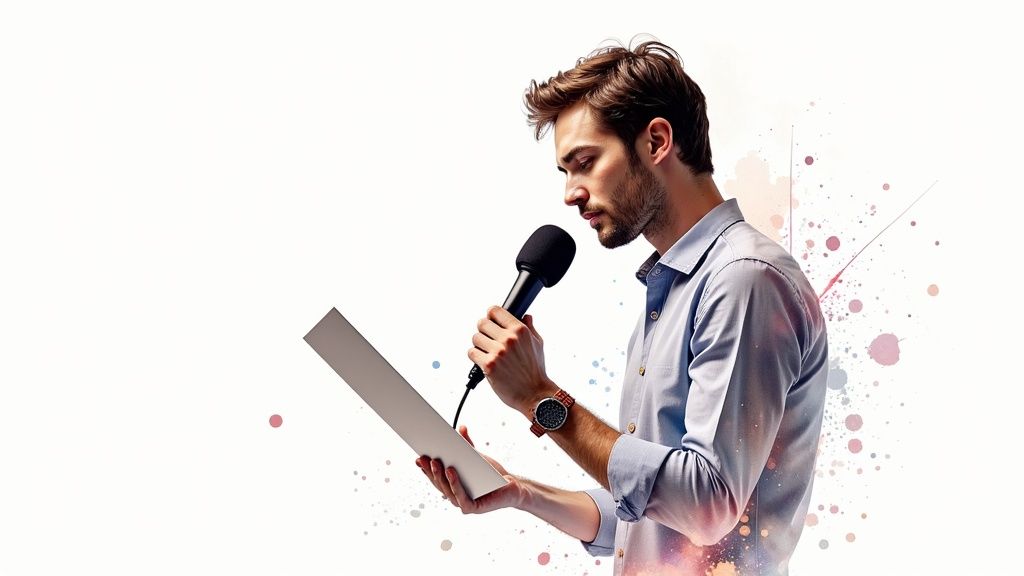
Imagine having a performer on call, 24/7, who can read any script you give them with perfect consistency and genuine emotion. That's the real magic behind an AI voice actor. It's not just a robot reading text; it's a sophisticated system that uses advanced text-to-speech, fueled by machine learning, to turn a script into something that sounds authentically human.
It helps to think of it less like a computer and more like a talented singer interpreting a piece of music. The AI doesn't just see words; it analyzes the context, emotion, and rhythm to deliver a performance that truly connects. This whole field is part of a bigger picture, and if you're curious, getting a handle on What is Generative AI will give you a great foundation for how these creative tools work.
The Core Components of AI Voices
At its heart, an AI voice actor isn't just one single thing. It’s a blend of several key technologies working in concert to turn lifeless text into dynamic, expressive speech. Once you understand these pieces, you'll see how a simple script becomes a compelling audio track.
These are the main ingredients:
- Text-to-Speech (TTS) Engines: This is the base layer—the tech that turns written words into audio. But modern TTS has moved way past simple pronunciation; it’s all about capturing the subtle nuances and patterns of human speech.
- Machine Learning Models: This is the brain of the operation. These models are trained on massive libraries of human speech, allowing them to learn the unwritten rules of language—things like pacing, intonation, and emotional delivery.
- Voice Cloning: Some of the more advanced systems can even create a digital copy of a real person's voice. This involves analyzing the unique quirks of someone's voice from existing recordings to build a brand new, controllable vocal model.
To put these concepts into perspective, here’s a quick breakdown of how each component contributes to the final product.
AI Voice Actor Key Concepts at a Glance
| Concept | What It Does | Impact on Voice Quality |
|---|---|---|
| Text-to-Speech (TTS) | Converts written text into audible speech. | Forms the basic pronunciation and word flow. |
| Machine Learning | Analyzes vast audio data to learn human speech patterns. | Adds natural intonation, rhythm, and emotion. |
| Voice Cloning | Creates a digital replica of a specific human voice. | Allows for unique, consistent, and recognizable voices. |
This table shows how these technologies build on one another to create something far more sophisticated than a simple text reader.
Moving Beyond Robotic Narration
We all remember the early days of text-to-speech—monotone, clunky, and unmistakably robotic. Today’s AI voice actors are in a completely different league. The goal isn't just to read words anymore; it's to perform them.
An AI voice actor doesn't just pronounce words; it interprets them. By analyzing punctuation, sentence structure, and user-defined emotional cues, the technology can generate speech that conveys excitement, seriousness, or warmth, just like a human actor would.
This ability to capture and convey genuine emotion is what makes modern AI voices so powerful for video creators, marketers, and educators. Instead of a flat, boring narration that puts your audience to sleep, you can produce audio that grabs their attention and drives your message home.
For a platform like Aeon, this is a huge deal. It means users can create professional-grade video narrations without needing a recording studio or hiring voice actors, putting top-tier production quality within everyone's reach.
So, Why Are AI Voices Suddenly Everywhere?
The move toward synthetic voices in media isn't some minor trend; it's a fundamental shift in how content gets made. A few years ago, the idea of an AI voice actor narrating a major project felt like something out of a sci-fi movie. Today, it’s not just a reality—it’s a practical tool driven by real business needs and mind-blowing leaps in technology.
This explosion isn't happening in a vacuum. It’s a direct response to a global hunger for more content, delivered faster than ever. Think about the massive need for localized videos, where one marketing campaign has to be dubbed into a dozen different languages. Or picture a corporate training department needing to crank out hundreds of instructional videos, all with clear, consistent narration.
The Business Case for AI Voices
Companies are pouring money into synthetic media because it smashes through old-school production bottlenecks. Traditionally, finding the right voice talent meant wading through auditions, juggling recording schedules, and dealing with endless retakes. It's a slow, expensive process.
An AI voice actor just wipes those problems off the board. It’s a scalable solution that can spit out high-quality audio in minutes, not weeks.
This newfound efficiency opens up creative doors that were previously bolted shut. A social media team, for instance, can now A/B test five different versions of a video script to see what resonates with their audience. Trying to do that with human actors would be a financial nightmare.
The real game-changer here is scalability. With an AI voice actor, one person can generate a hundred different voiceovers in the time it used to take just to book a studio session. This completely changes the economics of creating professional-grade content.
And the financial numbers are staggering. The global market for AI voice generators was already pegged at USD 3.5 billion in 2023. Projections have it skyrocketing to roughly USD 21.75 billion by 2030—that's a compound annual growth rate of about 29.6%. This isn't just hype; it's a market responding to a massive demand for more personalized, engaging content across practically every industry. You can read more about these market trends and what’s driving them.
From Robotic to Unnervingly Realistic
The journey from the clunky, robotic speech of the past to the hyper-realistic voices we hear now has been incredible to watch. Early text-to-speech systems were… functional. They could say the words, but they had all the warmth and personality of a Speak & Spell. The rhythm was off, the emotion was non-existent, and you’d never mistake it for a human.
Modern AI voice actors have completely cleared that hurdle. They’re not just reading words; they’re performing. Trained on enormous datasets of human speech, these models learn not just what to say, but how to say it.
They’ve mastered the subtleties that make speech feel alive:
- Prosody: The natural rhythm, stress, and intonation that make language flow.
- Pacing: Knowing when to speed up for excitement or slow down for a dramatic pause.
- Emotional Range: The ability to convey happiness, seriousness, or urgency through tiny vocal shifts.
This evolution is exactly why a platform like Aeon is so powerful. It gives you the director's chair, letting you control these nuances just like you would with a human actor. You can ensure the final audio doesn't just fit—it perfectly elevates your video's mood and message.
Tacking the Demands of a Global Audience
One of the biggest drivers behind AI voice adoption is localization. As businesses push into international markets, speaking to customers in their own language isn't a "nice-to-have"—it's essential for building trust and getting results.
Trying to manually dub content for every new country is a logistical mess. You’re hiring voice actors for every single language, navigating cultural nuances, and trying to keep the quality consistent across the board. It’s a huge headache.
An AI voice actor streamlines that entire workflow. With a library of voices in different languages and accents ready to go, a small team can localize content for a worldwide audience with just a few clicks. Suddenly, global reach isn't just for mega-corporations anymore.
How AI Pulls Off Such Realistic Vocal Performances
Ever wonder what's going on behind the curtain with an AI voice actor? It’s way more involved than just a computer reading words out loud. Modern systems are built on Text-to-Speech (TTS) technology, sure, but they've evolved into something far more sophisticated. Think of it less like a simple text reader and more like a skilled vocal coach, analyzing every nuance of a script to deliver a genuinely human-like performance.
The magic kicks in the second you feed it some text. The AI doesn't just see a string of words; it performs a deep-dive analysis of the entire script. It looks at punctuation to figure out pauses and inflection, checks out the sentence structure to get the flow of ideas, and even identifies the context to nail the right tone. A question mark cues a rise in pitch, while an exclamation point signals a bit more energy or excitement.
Mastering the Music of Speech
This is where a concept called prosody comes into play, and it’s a total game-changer. Prosody is essentially the rhythm, stress, and intonation of speech—all the little things that make a voice sound engaging and natural instead of flat and robotic. It's the "music" of language, and getting it right is the secret to a believable vocal performance.
So how does an AI learn this? By training on massive datasets of human speech, often containing thousands of hours of audio from professional voice actors. By sifting through all that data, the AI starts to pick up on the subtle patterns of how we actually talk.
- Stress: It learns which words in a sentence to punch up to get the meaning across.
- Intonation: It figures out how pitch should naturally rise and fall in a conversation.
- Rhythm: It masters the pacing and cadence that makes speech feel conversational and easy to listen to.
This is what makes today’s AI voice actors so different from those clunky computer voices we remember from the past. The AI isn't just speaking; it's truly communicating.
The Director and Performer Analogy
Here’s a helpful way to think about it: You’re the director, and the AI is your incredibly talented—and infinitely patient—performer. You give it the script, but you also provide specific directions to shape the final delivery. This is where advanced platforms like Aeon really step up, giving you fine-grained control over the final sound.
You're not just a passive user; you're an active collaborator. By adjusting variables like pitch, speed, and pauses, you can guide the AI to achieve the exact performance you envision, turning plain text into a compelling and emotionally resonant voiceover.
For instance, you might tell the AI to slow down during a key moment for dramatic effect or bump up the pitch just a bit to convey more energy. This level of control lets you dial in every last detail, making sure the voiceover is a perfect match for the tone and message of your video. It’s what you need to create audio that feels authentic and sticks with your audience. Our guide on how to explore text-to-speech emotion dives even deeper into this.
The infographic below breaks down how all these pieces—the text analysis, the prosody, and your direction—come together to create a voice that sounds real.
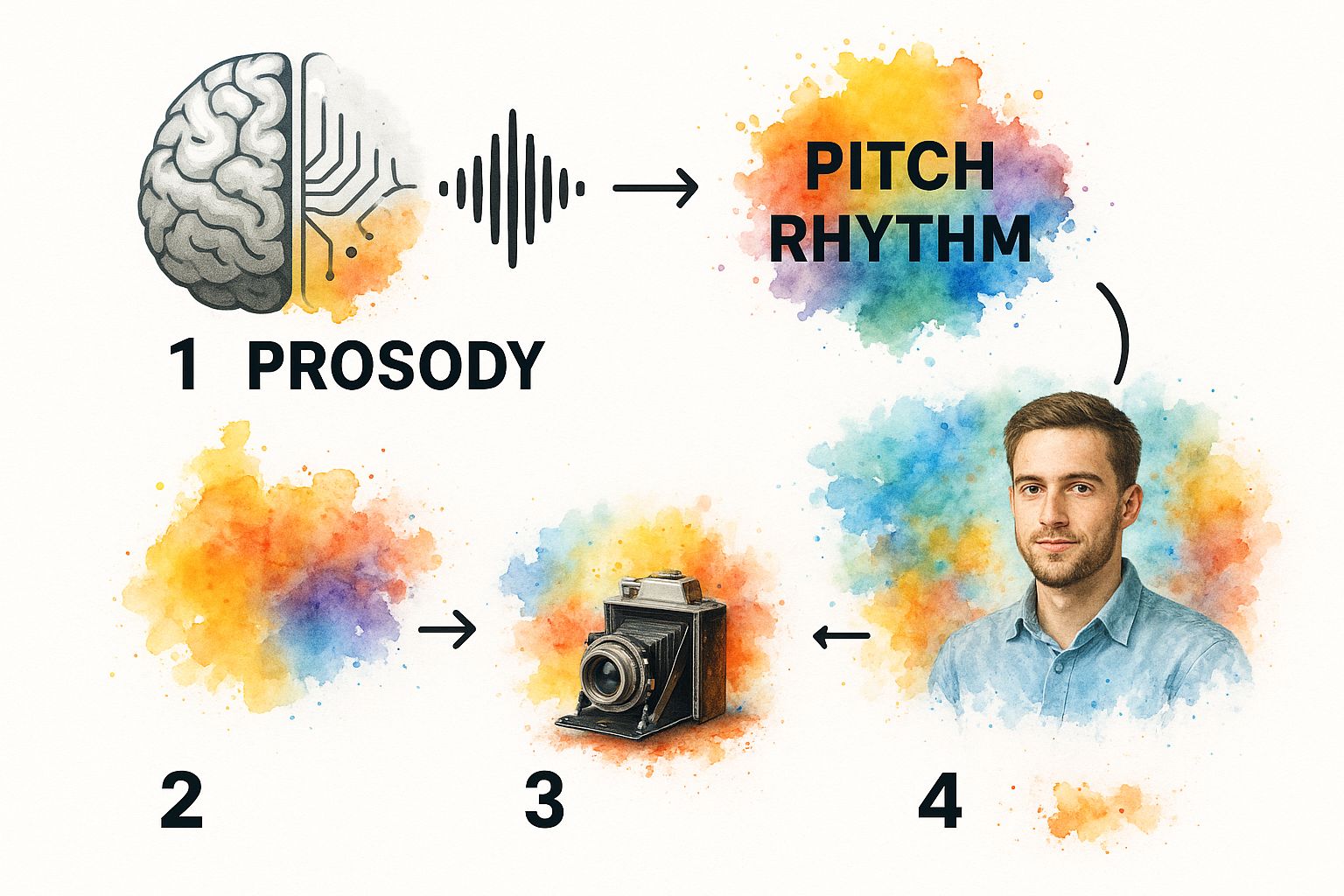
As you can see, the whole process is a smart mix of data analysis and creative control, giving you an audio output that truly captures the subtle nuances of human speech.
The Booming Field of Synthesis and Cloning
The technology powering these performances is moving at lightning speed, and it’s fueling some serious market growth. The AI voiceover market is on track to jump from USD 5.4 billion in 2024 to USD 36.43 billion by 2032, which works out to a compound annual growth rate of 29.1%. Within that explosion, voice cloning is set to grow even faster, with a huge demand coming from the gaming and advertising industries.
This growth is all thanks to increasingly sophisticated models that can not only generate brand-new voices from scratch but also create digital replicas of existing ones. While this opens up some incredible creative doors, it also brings up important ethical questions about consent and ownership. But one thing is for sure: the technology's ability to create such lifelike performances shows just how far machine learning has come, evolving from simple text conversion to what feels like genuine vocal artistry.
How AI Voiceovers Are Changing the Video Production Game
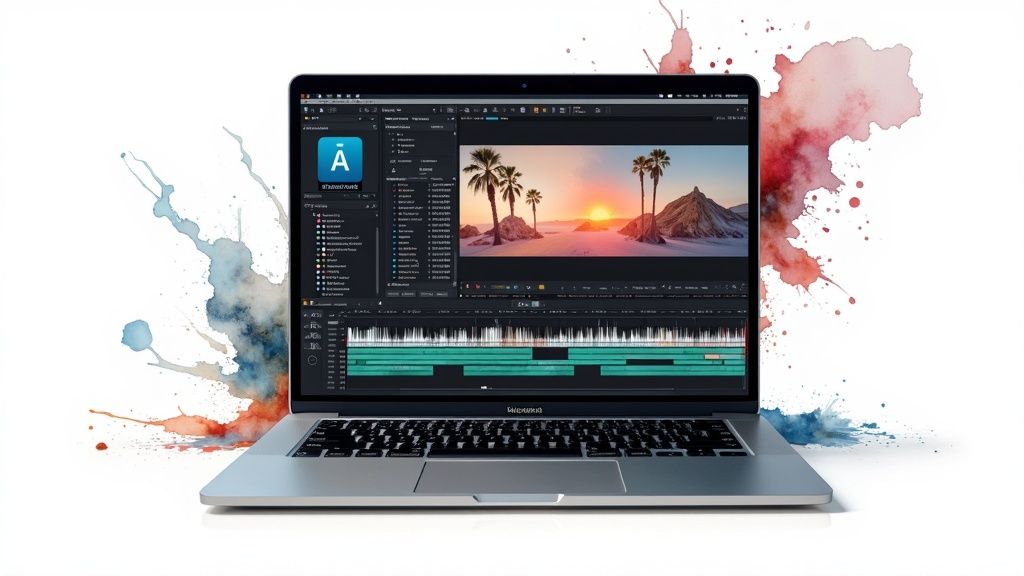
Technical specs are one thing, but the real magic of an AI voice actor happens when you see it solve actual problems for video producers. This isn't some far-off future concept; it's here now, helping creators, marketers, and educators get high-quality voiceovers faster, cheaper, and with way more flexibility than ever before. For teams churning out content at scale, it's a total game-changer.
Think about a social media manager who needs to create ten different ads for a new campaign, each one tweaked for a specific audience. The old way? A tangled mess of booking a voice actor, scheduling studio time, and managing endless takes. It was slow and expensive.
Now, with an AI voice actor, all ten of those variations can be generated in a matter of minutes. This completely flips the script on the creative workflow, making it possible to A/B test and fine-tune your messaging on the fly—something that used to be a luxury reserved for massive budgets.
Practical Ways People Are Using AI Voices
The cool thing is how an AI voice actor adapts to solve different problems for different creators. Whether you're putting together a training course or rolling out a global ad campaign, the core benefits of speed and consistency shine through.
Here are a few real-world scenarios where this tech is making a huge difference:
- E-Learning and Corporate Training: An instructional designer can whip up a whole series of training modules with a perfectly consistent narrator. If something needs to be updated later, they just generate the new lines in the exact same voice. No more jarring audio changes that pull learners out of the experience.
- Marketing and Advertising: A marketing team can quickly test-drive multiple scripts for a new video ad. They can generate one version with an upbeat, energetic tone and another that’s more serious and professional. This lets them see what actually resonates with their audience before locking in the final cut.
- Content Localization: A media company can take a hit video and spin up versions for different international markets in a fraction of the time. An AI voice actor with a whole library of languages and accents makes global distribution straightforward and affordable.
This isn't just a niche trend. The broader market is taking notice. Investment and corporate interest have exploded, with voice technology companies making up a whopping 22% of a recent Y Combinator class. That's a massive signal of confidence in voice-based tech across the board.
AI Doesn't Just Save Time—It Unlocks Creativity
The biggest win here isn't just about cutting costs or saving a few hours. It’s about opening up new creative doors that were previously shut for smaller teams.
Before AI, certain projects were just too ambitious or resource-heavy. Now, creators have the freedom to experiment and iterate without constantly worrying about their budget.
Imagine you're producing a documentary-style video. Instead of being locked into one narrator from the get-go, you can "audition" dozens of AI voices with your script. You can play around until you find the perfect tone and rhythm that elevates your visuals and drives the story home. That kind of creative control helps you deliver a much more polished and professional final product.
The true advantage lies in iteration. An AI voice actor allows you to treat narration as a dynamic element of your video, easily tweaked and refined throughout the production process, much like editing visuals or adding music.
This approach stops the voiceover from being an afterthought and makes it a core part of the creative vision from day one.
For video platforms like Aeon, this is everything. We're all about giving users the tools to produce amazing video content that genuinely connects with people. To see how to put this into practice, check out our guide to enhance your videos with AI voice for video proven strategies. Ultimately, our goal is to make professional-grade voiceovers accessible to every creator, no matter their budget or technical skill level.
How to Choose the Right AI Voice Actor for Your Project
With so many AI voice tools popping up, picking the right one for your project can feel like a pretty big decision. But it doesn't have to be overwhelming.
The trick is to have a clear framework. Instead of getting bogged down in a sea of features, you can simplify the choice by focusing on what truly impacts your final video. It’s all about matching the tech to your creative vision and, of course, your budget.
Evaluate Vocal Quality and Emotional Range
First things first: how does the voice actually sound? This is, by far, the most critical factor. A voice that comes across as robotic or emotionally flat can instantly make your audience tune out.
So, listen closely to the samples. Better yet, test the tool with a few lines from your own script. Pay attention to the subtle details. Can the voice handle a long, complex sentence without sounding clunky? Does it respect punctuation, adding natural pauses and emphasis where they belong?
The best platforms offer a whole spectrum of emotions. You should be able to direct the performance, specifying a tone like "energetic," "somber," or "professional." This is the kind of control that turns a generic narrator into a genuinely compelling digital performer. A high-stakes marketing video, for example, needs a voice that’s confident and persuasive—something a more basic AI just can't deliver.
Check for Language, Accents, and Customization
Your audience should always dictate the voice you choose. If you're creating content for viewers around the world, a deep library of languages and regional accents isn't just a nice-to-have; it's essential. This is how you make your message feel authentic and connect with people in different markets.
But a big library isn't the only thing to look for. Think about the level of customization you get. Can you tweak the speed, pitch, and volume? Can you manually add a pause for dramatic effect or punch up a specific word?
A great AI voice actor platform gives you the tools of a director. It allows you to fine-tune every aspect of the vocal performance, ensuring the final audio perfectly complements your visual storytelling.
This kind of granular control is what sets professional-grade tools like Aeon apart. It lets you craft a voiceover that is truly yours, rather than settling for a one-size-fits-all sound that might not fit your brand.
Comparing AI Voice Actor Platforms
Not all AI voice tools are built the same. They generally fall into a few different tiers, and understanding the differences is key to making the right call for your project. Free tools are great for a test run, but when your brand's reputation is on the line, the jump to a professional platform is a no-brainer.
Here's a quick breakdown to help you see the trade-offs at a glance.
Comparing AI Voice Actor Platforms
| Feature | Basic/Free Tools | Professional Platforms (e.g., Aeon) | Enterprise Solutions |
|---|---|---|---|
| Vocal Realism | Often sounds noticeably robotic or has unnatural pacing. | Hyper-realistic voices with natural human intonation. | Custom-cloned voices that match a specific brand identity. |
| Emotional Control | Limited or no options to adjust tone or emotion. | Extensive controls for specifying mood and delivery style. | Fine-tuned emotional models trained on proprietary data. |
| Language Library | A small selection of common languages and accents. | Comprehensive library with numerous global languages. | Expanded library with niche dialects and specialized accents. |
| Usage Rights | Restricted to non-commercial use, often with attribution. | Clear commercial licensing for marketing and sales content. | Full buyout rights and exclusive usage agreements. |
| API Access | Typically not available for workflow integration. | Full API access to automate voiceover creation at scale. | Custom API integrations and dedicated support. |
As you can see, you get what you pay for. While free tools have their place for hobbyists or internal drafts, serious video production demands the quality, control, and legal clarity that professional platforms provide.
A Quick Checklist for Your Decision
Before you pull the trigger on a subscription, run through this quick checklist. Answering these questions will help you nail down the right AI voice actor for your specific needs and avoid any regrets down the road.
- Does the voice quality meet my brand standards? Be honest. Listen with a critical ear to make sure the realism is there.
- Can I direct the performance effectively? Look for those crucial controls—emotion, tone, pitch, and speed.
- Does it support all the languages and accents I need? Think about where your audience is today and where it might be tomorrow.
- Are the licensing terms clear for commercial use? This is a big one. Navigating voice usage rights can be tricky, so make sure you're legally covered.
- Does it integrate with my existing workflow? For teams pumping out a lot of content, API access can be a game-changer.
By working through these points, you’ll go from feeling overwhelmed by options to making a smart, strategic choice. You’ll end up with an AI voice actor that doesn’t just sound amazing but acts as a reliable, powerful tool in your video production arsenal.
The Future of Voice and Human Collaboration
The whole conversation around the AI voice actor is starting to change. For a while, it was all about replacement, but now, the much more interesting and realistic future looks like a powerful collaboration. The new model isn't about erasing human talent; it's about using AI as a tool to support and even elevate human creativity.
Think of it as a partnership. An AI can churn out the high-volume, repetitive narration needed for things like corporate training modules or simple explainer videos. This frees up human voice actors to pour their energy into what they do best: delivering the nuanced, emotionally complex, and character-driven performances that bring films, high-end ads, and video games to life.
A New Creative Partnership
This collaborative approach just makes sense. It allows production teams to be much smarter with their resources. Human performers can focus their time on the roles that truly need that spark of genuine emotional depth and unique interpretation. Meanwhile, the AI handles the more straightforward stuff, ensuring consistency and speed. It's a workflow that's more efficient and, frankly, more creatively fulfilling for everyone.
This kind of evolving relationship between artists and technology isn't just happening in the voice-over booth. To get a broader perspective, it's worth looking at the challenges and opportunities presented by AI in music, where many of the same core issues around ownership and creative control are being debated.
Addressing Critical Ethical Questions
Of course, this collaborative future hinges on us getting the ethics right. As voice cloning technology gets easier to access, the industry has to put some serious guardrails in place to protect performers and maintain trust with the public.
There are a few big questions we need to answer:
- Fair Compensation: What’s the right way to pay a voice actor whose clone is used in thousands of projects? It can't just be a one-time fee; the model has to reflect ongoing use.
- Informed Consent: Performers need to give explicit, crystal-clear consent for their voices to be cloned. The terms have to spell out exactly how that digital replica can and cannot be used.
- Transparency: Audiences deserve to know when they're listening to a synthetic voice. Being upfront is the only way to maintain authenticity and stop the tech from being misused.
The goal isn’t to slam the brakes on technology, but to steer it in a responsible direction. A future where human and AI voices work together requires a framework that respects the rights and contributions of the original artists.
Building this ethical foundation is non-negotiable. You can dive deeper into the nuances of building trust through thoughtful integration of AI voices across different creative fields. By putting ethical practices first, we can build a future where human performers and AI voice actors team up to create richer, more amazing audio experiences for all of us.
Still Have Questions About AI Voice Actors?
It’s totally normal. As you start exploring AI voice actors, a few questions are bound to pop up. This tech is moving at lightning speed, so getting a handle on the practical side of things—like cost, quality, and legal rights—is crucial before you dive in.
Let's clear the air and tackle some of the most common questions head-on. Think of this as your quick-and-dirty guide to getting started with confidence.
Is This Going to Be Expensive?
The cost can be all over the map, but here's the good news: it’s almost always cheaper than hiring a human voice actor, especially if you have a lot of content to produce. Most platforms run on a subscription model, with different tiers based on how much you need, the quality of the voices, and other features.
You’ll find free tools out there, but they usually have a catch, like less realistic voices or restrictions on using them for commercial projects. Professional platforms like Aeon give you access to incredible, high-quality voices and straightforward licensing for a monthly or yearly fee. It makes that professional-grade sound accessible without blowing up your budget.
But How Good Is the Quality, Really?
Honestly, the quality of today's top-tier AI voices is stunning. The most advanced systems can generate speech that’s pretty much indistinguishable from a human, nailing the natural rhythm, intonation, and even emotional delivery.
The biggest difference isn't realism—it's consistency. An AI voice actor delivers a perfect take every single time. No background noise, no stumbles, no weird shifts in tone unless you tell it to. It’s how you guarantee a polished, professional sound across every single project.
Of course, not all platforms are created equal. It's always a smart move to listen to a few voice samples or take advantage of a free trial to make sure the quality is a good fit for your brand before you commit.
Are There Legal Risks I Should Worry About?
This is a big one, and the rules are still being written. The main legal sticky points circle around usage rights and voice cloning. When you use a voice from a reputable platform, you're essentially getting a license that spells out what you can and can't do with it (like for commercial vs. non-commercial use). Always, always read the terms of service.
Cloning a specific person's voice without their permission is where things get really murky and legally heated. Recent court cases have made it crystal clear that consent and solid contracts are non-negotiable. The safest path? Stick to established platforms that have already done the legal legwork to secure the rights for every voice in their library. That way, you’re protected from any potential copyright or "right of publicity" headaches down the road.
Ready to bring your content to life with a professional, consistent voice? With Aeon, you can create stunning video narrations in minutes. Explore our library of realistic AI voices and see how easy it is to produce high-quality content at scale. Visit Aeon to start creating today!
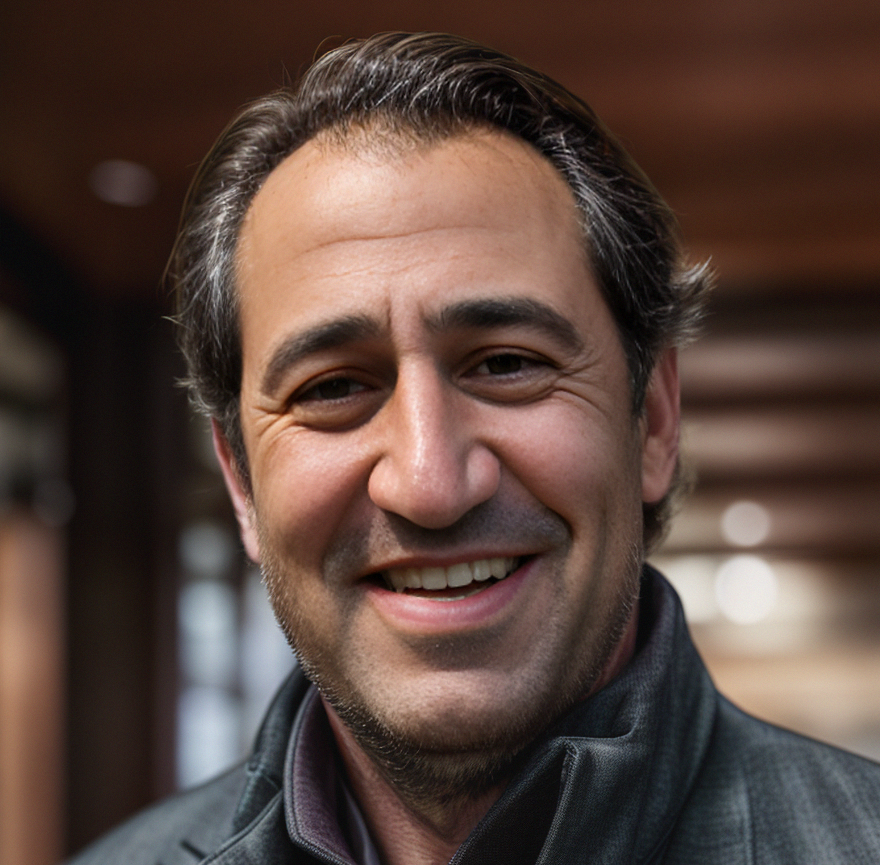
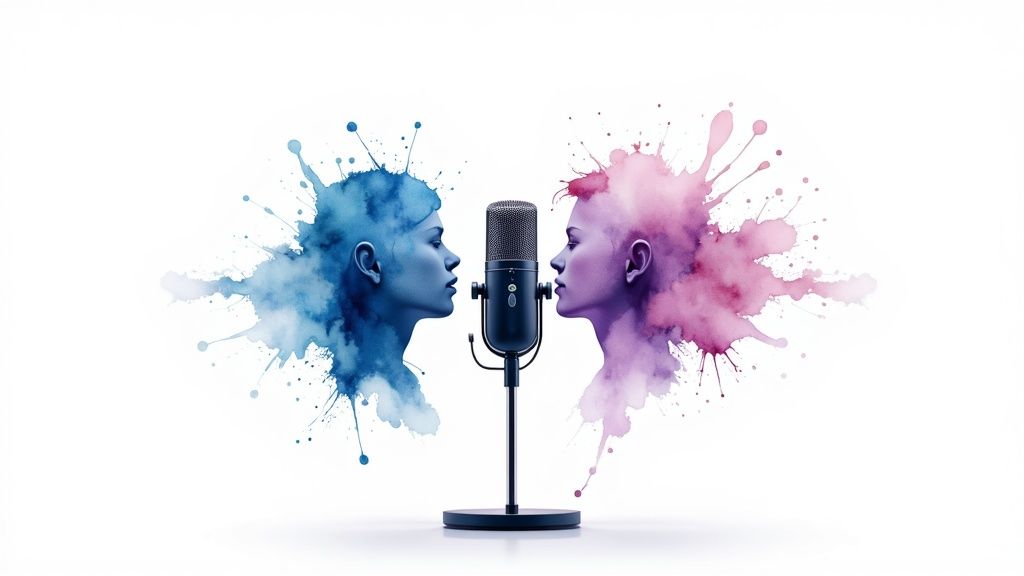
.jpg)